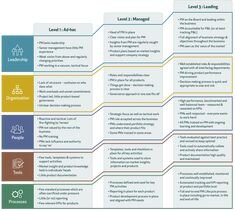
That stock should be included in the common-stock-outstanding figure. Following are the differences between common stock and preferred stock. Different accounting systems and ways of dealing with depreciation and inventories will also change the figures posted to a balance sheet. Because of this, managers have some ability to game the numbers to look more favorable.
In general, common stock comes with the right to vote for corporate directors, as well as the right to vote on policy changes and stock splits. There are a few exceptions to this rule, however, such as companies that have two classes of common stock — one voting and one non-voting. The company’s class A shareholders (GOOGL 0.27%) have voting rights, while its class C shareholders (GOOG 0.36%) do not. We sell different types of products and services to both investment professionals and individual investors. These products and services are usually sold through license agreements or subscriptions. Our investment management business generates asset-based fees, which are calculated as a percentage of assets under management.
MANAGING YOUR MONEY
Also, if a company IPOs and gets $1 million from investors, then cash goes up by $1 million, and shareholders’ equity goes up by $1 million. The capital gains tax is a tax on the profits from selling securities or other investments. Most investors can reduce their capital gains taxes by holding their investments for over one year. If you sell before one year, the gains are taxed at your ordinary income level, which is generally higher than the long-term capital gains tax rate.
In order to locate the value of common stock shares, you can use the quarterly or annual balance sheet issued by a company. This information will typically be included in the element of the balance sheet known as stockholder equity. It may be necessary to subtract the value of preferred stock, bonds and other investment options first as part of a common stock formula, however. In its corporate charter, a company may choose to assign either a par value or stated value for common stock. Both values are arbitrary and typically assigned for accounting purposes only.
isCompleteProfile ? “Setup your profile before Sign In” : “Profile”
The balance sheet shows a snapshot of a company’s finances at a single point in time, usually the last day of the fiscal quarter or fiscal year that is being reported. The main sources of shareholder rights are legislation in the company’s incorporation, corporate charter, and governance documents. Therefore, the rights of shareholders can vary from one jurisdiction to another and from one corporation to another. From there, simply scroll down until you find the section in the 10-Q or 10-K called “Capital Stock.” All the details you need will be there, plain to see. You’ll see the various other stock categories I’ve discussed, so don’t let that confuse you. One possible point of confusion we haven’t yet mentioned is stock given to employees as compensation, typically in some combination of restricted stock, options, or equity grants.
Many companies elect to buy back shares as part of their capital-allocation strategy. When a company buys back its own shares, that stock is accounted for as “treasury stock” on the company’s balance sheet. Treasury stock is no longer outstanding — the company itself now owns it, not an investor or employee — but that stock has still been issued.
About The Motley Fool
This is where investors can determine the book value, or net worth, of their shares, which is equal to the company’s assets minus its liabilities. Common Stock is also the title of the general ledger account that is credited when a corporation issues new shares of common stock. Capital stock is another term for the ownership shares of a company’s equity, represented as either preferred or common stock. Corporations typically sell their shares to investors in order to raise capital to fund their business operations. In exchange, investors receive partial ownership of the company, including dividends or voting power. This financial statement lists everything a company owns and all of its debt.

When a company sells shares in an initial public offering, the IPO price is normally well above the par value. In addition, any secondary offerings or share buybacks will also affect the value of the capital stock. Total par value equals the number of preferred stock shares outstanding times the par value per share. For example, if a company has 1 million shares of preferred stock at $25 par value per share, it reports a par value of $25 million.
Financial ratios and metrics
Without context, a comparative point, knowledge of its previous cash balance, and an understanding of industry operating demands, knowing how much cash on hand a company has yields limited value. For a company to issue stock, it must begin by having an initial public offering (IPO). An IPO is a great way for a company, seeking additional capital, to expand.
- Shareholder equity is the money attributable to the owners of a business or its shareholders.
- Treasury stock is no longer outstanding — the company itself now owns it, not an investor or employee — but that stock has still been issued.
- A brief review of Apple’s assets shows that their cash on hand decreased, yet their non-current assets increased.
The financial statement only captures the financial position of a company on a specific day. Looking at a single balance sheet by itself may make it difficult to extract whether a company is performing well. For example, imagine a company reports $1,000,000 of cash on hand at the end of the month.
AccountingTools
However, it’s important to note that this number is typically very small and has no connection to the stock’s market value — it is simply a technical term for a stock’s legal capital. For example, if a company issues preferred stock for $25 per share with a par value of $0.01, $24.99 is considered paid-in capital. Common stock is a type of security that represents ownership of equity in a company. There are other terms – such as common share, ordinary share, or voting share – that are equivalent to common stock. Thanks to the SEC, common stock outstanding is very easy to calculate All companies are required to report their common stock outstanding on their balance sheet. The easiest way to calculate the number is to simply look it up.
Carty holds a Bachelor of Arts degree in business administration, with an emphasis on financial management, from Davenport University. Harold Averkamp (CPA, MBA) has worked as a university accounting instructor, accountant, and consultant for more than 25 years. He is the sole author of all the materials on AccountingCoach.com.
These are things the company owns that can easily be sold for cash or will be used within one year. If you are analyzing a stock, then the balance sheet typically shows more than one time period. For example, it may show the breakdown for two or three consecutive years, so investors can see how the numbers evolved over time.
Preferred stock will indicate in the name that the shares are preferred. These are things that the company owns that can not easily be sold for cash or will be owned for the long-term, as in more than one year. The exact line items on the balance sheet vary between different businesses. Sometimes the same terms have different implications depending on the company. But it’s important to be aware of changes and trends to see how a company is doing, so it helps to look at several balance sheets for different time points.
Ares Commercial Real Estate Corporation Reports Second Quarter … – Business Wire
Ares Commercial Real Estate Corporation Reports Second Quarter ….
Posted: Wed, 02 Aug 2023 10:00:00 GMT [source]
When you buy a share of common stock, you are buying a part of that business. If a company was divided into 100 shares of common stock and you bought 10 shares, you would have a 10% stake in the company. If all the company’s assets were converted into cash and all its liabilities were paid off, you would receive 10% of the contribution statement definition cash generated from the sale. Common stock is the most widely available type of shares issued by a company and what you will likely encounter when trading stocks on an exchange. These shares typically come with voting rights, but are the last in line in the preference ordering of being repaid if a company goes bankrupt.
Without knowing which receivables a company is likely to actually receive, a company must make estimates and reflect their best guess as part of the balance sheet. Accounts within this segment are listed from top to bottom in order of their liquidity. They are divided into current assets, which can be converted to cash in one year or less; and non-current or long-term assets, which cannot. Each category consists of several smaller accounts that break down the specifics of a company’s finances.
0 comentário